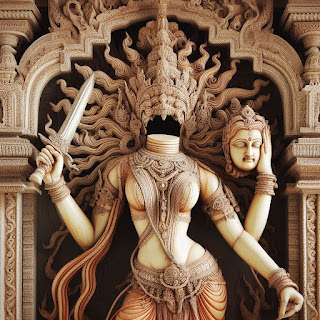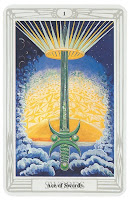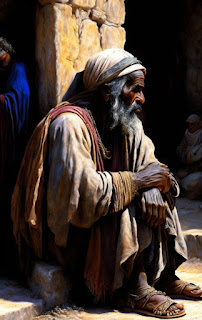Gnostic Creation: A Unique Perspective on the Origins of the World
Gnosticism is a term that encompasses a variety of religious and philosophical movements that emerged in the first few centuries CE, especially in the Mediterranean region. The word “gnostic” comes from the Greek word “gnosis”, meaning “knowledge”. Gnostics claimed to have access to a special, hidden, or esoteric knowledge that could liberate them from the bondage of the material world and lead them to salvation.
One of the most distinctive features of Gnosticism is its creation myth, which differs significantly from other creation myths in various ways. In this blog post, we will explore some of the main aspects of the Gnostic creation myth, and compare and contrast it with other creation myths from different cultures and traditions.
The Supreme God and the Pleroma
The Gnostic creation myth begins with the existence of a supreme God, who is also called the One, the Father, or the Monad. This God is beyond all description, comprehension, and limitation. He is the source of all being and nothingness, and he dwells in a realm of pure light and spirit called the Pleroma (meaning “fullness” or “plenty”).
The supreme God emanated from himself various divine beings called Aeons, who are his attributes, aspects, or expressions. The Aeons are arranged in pairs of male and female, called syzygies. Together, they form a harmonious and perfect unity within the Pleroma.
One of the most important pairs of Aeons is Christ and Sophia (meaning “wisdom”). Christ is the embodiment of the supreme God’s mind, while Sophia is his creative power. Christ also acts as a mediator between the supreme God and the lower realms of existence.
The Fall of Sophia and the Birth of the Demiurge
The Gnostic creation myth takes a dramatic turn when Sophia, one of the highest Aeons, decides to act on her own, without consulting her partner or the supreme God. She wants to create something out of her own essence, without using any intermediary. However, her attempt fails miserably, as she gives birth to a monstrous and defective being called Yaldabaoth, who is also known as the Demiurge (meaning “craftsman” or “maker”).
The Demiurge is ignorant of his true origin and nature. He believes that he is the only god and creator of all things. He is arrogant, jealous, and violent. He also inherits some of Sophia’s power, which he uses to create his own realm of matter and darkness, which he calls the cosmos.
The Demiurge also creates various subordinate beings called Archons (meaning “rulers” or “authorities”), who are his helpers and agents. The Archons are also ignorant and malevolent. They rule over the material world and oppress its inhabitants.
Sophia realizes her mistake and regrets her action. She tries to retrieve her power from the Demiurge, but she fails. She also becomes trapped in his realm, separated from her partner and the Pleroma. She suffers greatly from her fall and cries out for help.
The Creation of Humanity and the Intervention of Christ
The Gnostic creation myth continues with another twist when the Demiurge decides to create humanity in his image and likeness. However, he does not have enough power or wisdom to do so by himself. He needs to use some of Sophia’s power that he stole from her.
The Demiurge also needs a model or a blueprint for his creation. He sees a reflection of himself in the waters below his realm, which he mistakes for another god. He does not realize that this reflection is actually an image projected by Christ from above, who wants to help Sophia and humanity.
The Demiurge orders his Archons to fashion a human body out of clay, using his reflection as a guide. However, this body is lifeless and inert. It needs a spark or a breath of life to animate it.
Christ then secretly intervenes and sends a ray of light from the Pleroma into the human body. This light contains a fragment or a seed of Sophia’s power and wisdom, which is also called the spirit or the soul.
The human body then becomes alive and conscious. It stands up and surpasses the Demiurge and his Archons in beauty and intelligence. The Demiurge becomes jealous and angry at his creation. He tries to imprison it in a physical body that is subject to decay, disease, death, pain, pleasure, fear, desire, etc.The Demiurge also tries to keep humanity ignorant of its true origin and destiny. He imposes various laws, rules, religions, customs, etc. on humanity, which are meant to enslave and deceive it. He also claims to be the only god and demands worship and obedience from humanity.
However, Christ does not abandon humanity. He continues to send messages, teachings, prophets, saviors, etc. to humanity, which are meant to awaken and enlighten it. He also promises to return and rescue humanity from the Demiurge and his Archons, and to reunite it with Sophia and the Pleroma.
The Differences and Similarities with Other Creation Myths
The Gnostic creation myth is unique in many ways, but it also shares some similarities with other creation myths from different cultures and traditions. Here are some of the main differences and similarities:
- The Gnostic creation myth is dualistic, meaning that it posits a fundamental opposition between spirit and matter, light and darkness, good and evil, etc. Other creation myths may be monistic (meaning that they posit a single principle or substance behind all things), polytheistic (meaning that they posit multiple gods or forces behind all things), or pantheistic (meaning that they identify God with all things).
- The Gnostic creation myth is often pessimistic, meaning that it views the material world as a prison, a trap, or a mistake. Other creation myths may be optimistic (meaning that they view the material world as a gift, a blessing, or a purpose), or neutral (meaning that they view the material world as neither good nor bad, but simply as it is).
- The Gnostic creation myth is salvation-oriented, meaning that it focuses on the need and the possibility of escaping from the material world and returning to the spiritual realm. Other creation myths may be cosmogonic (meaning that they focus on the origin and the order of the material world), or anthropogonic (meaning that they focus on the origin and the role of humanity in the material world).
- The Gnostic creation myth is influenced by various sources, such as Jewish, Christian, Greek, Egyptian, Persian, etc. It also incorporates elements from various genres, such as mythology, philosophy, theology, etc. Other creation myths may be more homogeneous or more diverse in their sources and elements.
- The Gnostic creation myth is symbolic, allegorical, or metaphorical, meaning that it uses various images, characters, stories, etc. to convey deeper meanings and truths. Other creation myths may be more literal or more figurative in their language and style.
Conclusion
The Gnostic creation myth is a fascinating and complex narrative that reveals a unique perspective on the origins of the world and the destiny of humanity. It challenges many of the assumptions and beliefs of other creation myths, and invites us to question our own views and values.
Whether we agree or disagree with the Gnostic creation myth, we can appreciate its richness and diversity, its creativity and originality, its boldness and courage. We can also learn from its insights and wisdom, its hopes and aspirations, its struggles and triumphs.
The Gnostic creation myth is not just a story of the past. It is also a story of the present and the future. It is a story of us.





Comments
Post a Comment